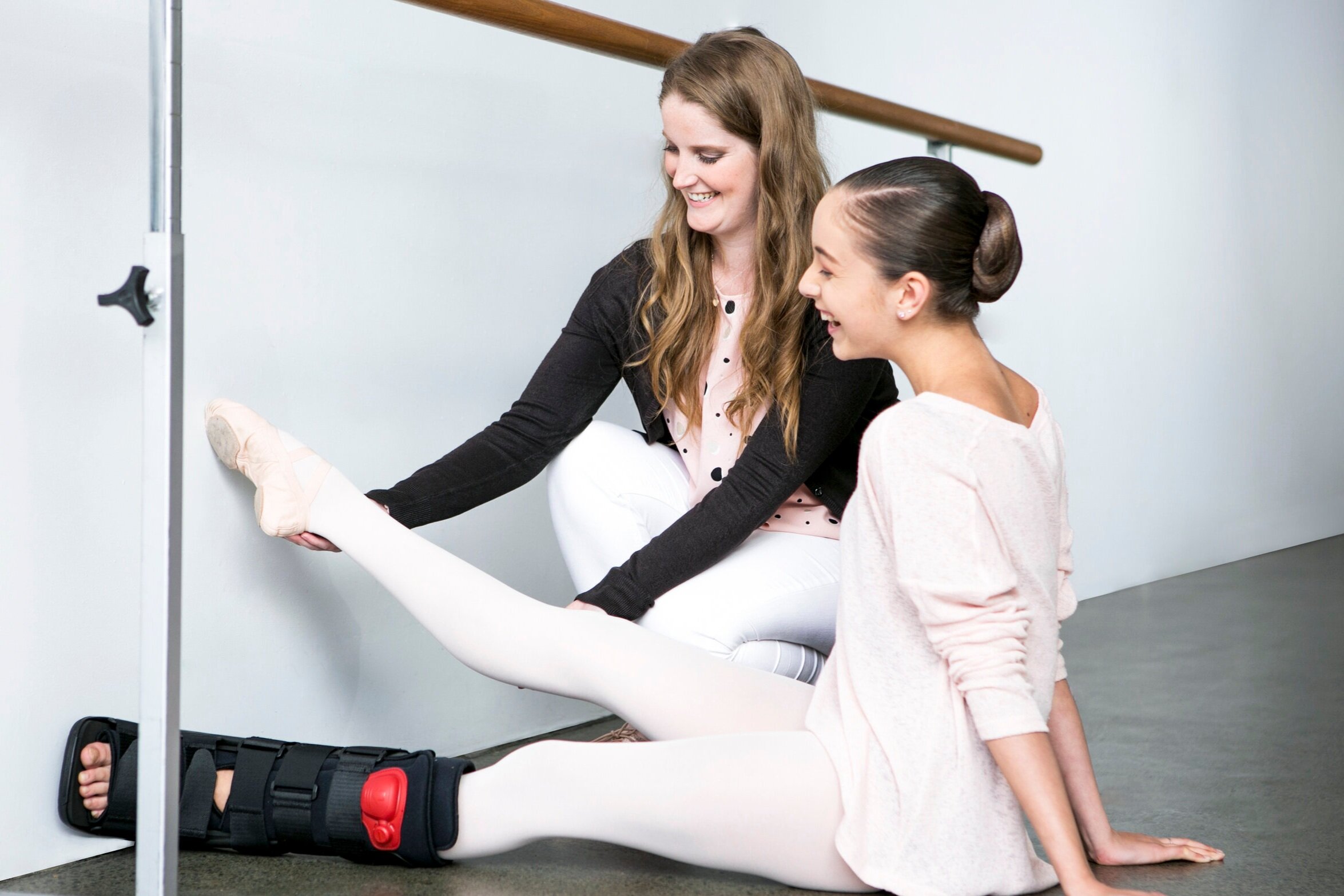COMMON DANCE INJURY FACTORS
Dancing places extreme demands on the feet and ankles, increasing the risk of injury. Ballet dancers have added risk due to the mobility and positions required to be en pointe and demi pointe.
Most common dance injuries fall into overuse or one of the following categories:
POOR TECHNIQUE
Most dance positions are in external rotations of the hip.
Dancers without the required strength and flexibility in the hip often compensate by forcing rotation through the knee, ankle and foot.
This can result in forced eversion of the hindfoot and excessive pronation of the midfoot and forefoot.
ANATOMICAL ANOMOLIES
Dancers with structural problems including Cavus Foot, Morton’s Foot and hyper mobility have increased risk of ligament strain, fasciitis, stress fracture, corns, Hallux Valgus and bunions.
Structural problems make it difficult to absorb shock, balance stress equally and have a tendency for hyper mobility.
If a dancer does not develop the required dorsi flexion at the ankle and mid-foot, safe performance of some movements may be at risk and add increased pressure on the feet.
FOOTWEAR AND SURFACES
Footwear - Dance shoes often have minimal or no support due to the light weight material.
Flooring - Dance studio flooring should absorb some shock, although too much flexibility in the flooring can cause muscle fatigue. Floors that are too hard lack shock absorption which may lead to stress fractures.
“Statistics prove dancers have a high incidence (over 80%) of lower extremity injuries. It is important dancers receive a dance-based treatment or rehabilitation plan, combining conditioning, treatment and prevention-based education.”



